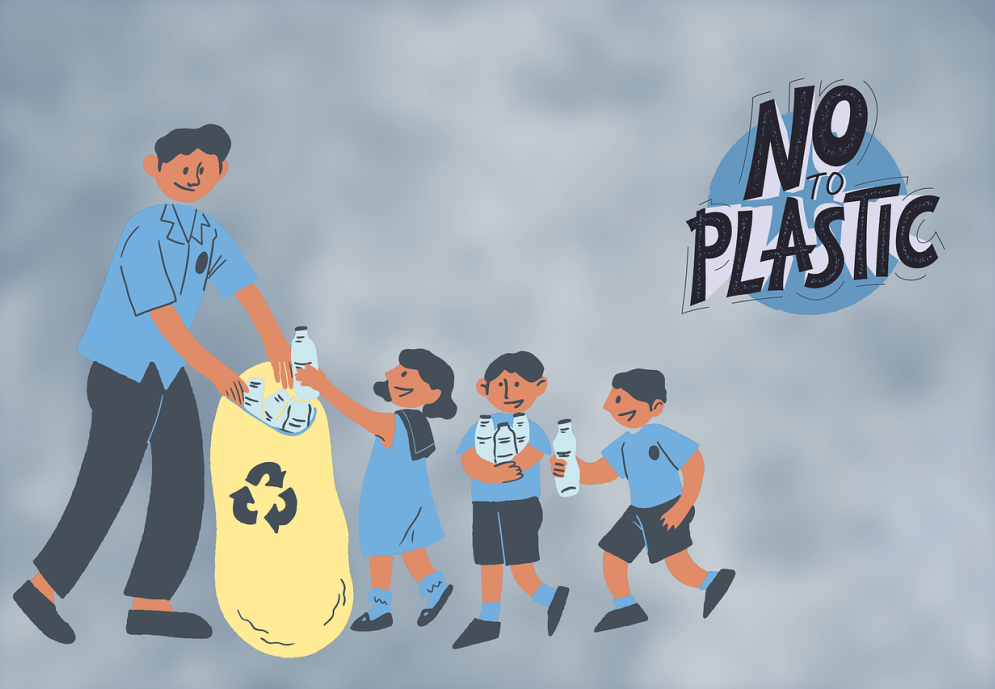

Plastic in school (primary school)
Young children can become 'trash detectives' to learn about rubbish, bins and waste.
Učni rezultati
The pupils...
- recognise their own consumer behaviour
- question consumption decisions
- apply mathematical quantities to everyday life
Zahtevan čas
4-6 teaching units
Orodja ali oprema
- Various types of waste (e.g. glass bottles, old newspapers/cardboard, plastic packaging, organic waste such as banana peel/tangerine peel, broken cups/dishes/clothing)
- Items that can still be recycled (e.g. clothing with a small hole, washed-out glass screw-top jars, plastic shopping bags)
- Coloured chalk
- Coloured pens
Opis aktivnosti
Look at the 'Trash Detectives' picture below.
- Circle the animals with a blue pencil.
- Circle the rubbish with a red pencil.
How did you recognise the rubbish? Imagine another child doesn't know what rubbish is. How would you explain the word?
What would have helped to keep the beach clean? What do you do with garbage? Collect ideas for dealing with rubbish with the class.
[Teacher presents the rubbish brought in and draws the different rubbish bins on the board with coloured chalk (organic waste rubbish bin, wastepaper, residual waste, yellow bag, used glass)].
To prevent waste from ending up in nature, it must be disposed of correctly. Which waste belongs in which rubbish bin? What does not need to be thrown away?
Optional:
How does waste separation work at school? Go in search of clues. Is the waste separated? Does waste end up in the wrong rubbish bin?
Homework:
- What does it look like at home? How many rubbish bins do you have? What are they for?
- Why is it bad when waste ends up in the environment
Namigi kako uvesti temo v šolski kurikul
Extension options:
- The teaching unit can be supplemented with an excursion (to the beach, riverbank, city park, etc.). The pupils can collect and sort rubbish here. They find out what type of rubbish it is, how it got there and how it could have been avoided.
- The pupils create a diary entitled “A day without plastic waste” about the project day and/or the excursion. Each pupil designs a page. They can draw their own pictures, write down memories or stick on material. All the pages are then put together to form a book.
Appendix
Work sheet: fill in the missing words
